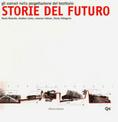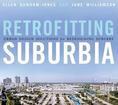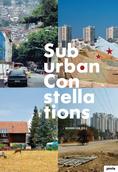urban projects urban market historic centers public spaces urbanism public art anthropology simulation Communication inu study day strategic planning parks renaissance Community local plans collaborative urban design tourism industrial sites culture paesaggio urban renewal creativity social housing cartography history
Visualizing Density
Julie Campoli, Alex S. MacLean
The American Dream of a single-family home on its own expanse of yard still captures the imagination. But with 100 million more people expected in the United States by 2050, rising energy and transportation costs, disappearing farmland and open space, and the clear need for greater energy efficiency and reduced global warming emissions, the future built environment must include more density. Consumer demand for more walkable, mixed-use, and concentrated neighborhoods is already on the rise among some demographic groups - the 70 million retiring baby boomers, for example, and young professionals seeking transit-oriented development for shorter commutes. But for others, density continues to have negative connotations. In many established urban neighborhoods, concerns about traffic congestion and parking, and strains on infrastructure, schools, and parks have led to resistance to more concentrated settlement patterns.
Into this context, landscape architect and land planner Julie Campoli and aerial photographer Alex S. MacLean have joined forces with the Lincoln Institute to create a full-color, richly illustrated book to help planners, designers, public officials, and citizens better understand, and better communicate to others, the concept of density as it applies to the residential environment.
Visualizing Density includes an essay on the density challenge facing the United States, an illustrated manual on planning and designing for “good” density, and a catalog of more than 250 diverse neighborhoods across the country, noting density in housing units per acre for each site. Four photographs of each location are included - close-up, context, neighborhood, and plan views - to provide an impartial and comparative view of the many ways to design neighborhoods.
This book grew out of a series of Lincoln Institute courses of the same name taught by Campoli and MacLean since 2003. Participants in those classes shared many stories of concentrated developments rejected outright or forced to reduce the number of housing units. The authors concluded there was a clear need for a better way to present density to the public. For many Americans density is infact associated with ugliness, crowding, and congestion, even though it can be shown that, when properly planned and designed, higher density can save land, energy, and dollars. Moreover, many people have difficulty estimating density from visual cues or distinguishing quantitative (measured) and qualitative (perceived) density. We tend to overestimate the density of monotonous, amenity-poor developments and underestimate the density of well-designed, attractive projects, thereby reinforcing the negative stereotypes.
A primary objective of this work is to correct these misperceptions. As Campoli stated at the Massachusetts Smart Growth Conference in Worcester, Massachusetts, in December 2007, “We don’t have a density problem. We have a design problem.”
CONTENTS
Foreword
by Armando Carbonell
I. Growing Closer
The Count
The Coming Boom
Spreading Out or Growing In
Crosscurrents
The Benefits
Why We Hate Density
How We Can Love Density
Visualizing Density
II. Patterns of Density
Planning for Density
Designing for Density
III. The Density Catalog
References
Acknowledgements
About the Authors
About the Lincoln Institute of Land Policy
ABOUT THE AUTHORS:
Julie Campoli is a landscape architect, land planner, and principal of Terra Firma Urban Design in Burlington, Vermont. She has developed innovative graphic techniques to illuminate land use issues, and has presented many workshops and lectures on issues of landscape change, sprawl, and density.
Alex S. MacLean, a pilot, photographer, trained architect, and principal of Landslides Aerial Photography in Cambridge, Massachusetts, has documented the history and evolution of the land and the changes brought by human intervention in numerous books, journals, and exhibitions.
Reviews:
by Paola Pellegrini
Online resources and links




Planum
The Journal of Urbanism
ISSN 1723-0993
owned by
Istituto Nazionale di Urbanistica
published by
Planum Association
ISSN 1723-0993 | Registered at Court of Rome 4/12/2001, num. 514/2001
Web site realized by ChannelWeb & Planum Association | Powered by BEdita 3




